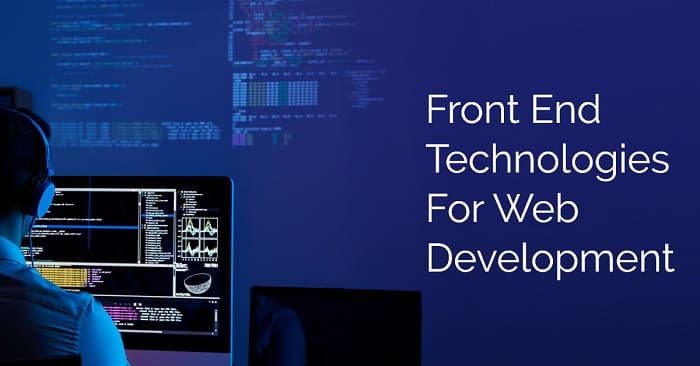
The frontend is the foundation or core of a website. In other words, it forms the heart of your site. To keep it attractive, developers spend plenty of time coding. Now, creating an intuitive interface has become easier with frontend development services.
You can hire a frontend developer for creating the user interface. They can assist in building the layout of your website.
Yet, the biggest challenge comes when one has to pick the right front-end technology. That’s why we have made it easier to choose front-end technologies for you. Go through this listicle to find out something that works for your web development needs.

Not to Miss 20 Front-End Technologies for Web Development
1. Filestack
Filestack is an all-in-one solution for managing your files. It will help you in manipulating jpg, png, mp4, and other file types. Being AI-powered, its image intelligence suite will detect objects.
2. Sencha Ext JS
Sencha Ext JS is a comprehensive frontend framework for creating data-driven apps. It’s great to create cross-platform web and mobile applications. It provides access to over 140+ in-built UI component libraries.
3. Froala
Froala is a WYSIWYG JavaScript web editor that can take in 100+ features on the interface. It’s developer-friendly, well structured, properly documented, and contains 30 plugins. This program works 10 times faster with a startup speed of less than 40ms.
4. Evanto HTML Templates
Evanto comes with 1000+ pre-designed SEO-ready templates. This helps a developer finish working on UI. You can customize it in whatever manner you wish.
5. MyFonts
MyFonts contains all kinds of fonts for web development use. Here, you will discover more than 130,000 fonts including classic ones.
6. AngularJS
AngularJS is a Javascript-based framework explicitly built for single-page mobile and desktop apps. It’s open source, free to download, and efficient in creating feature-rich apps. Besides, you can develop client-side apps using the MVC model.
7. Vue.JS
Vue.JS is a powerful front-end JavaScript framework running on model-view-viewmodel. It helps in creating a high-performing and scalable user interface. Over that, you also get intuitive APIs access and simple documentation.
8. Svelte
Svelte reduces the complexity that you face in web development. It permits code writing that takes the user interface experience to another level.
9. Bootstrap
Bootstrap is a full-feature frontend toolkit that utilizes Saas and an in-built grid system. Turn all your web projects into reality with this modular and customizable architecture.
10. React
React is our favorite framework due to its encapsulated components and declarative view. It also helps in painless rendering and is suitable for all frontend development services.
11. Semantic UI
Similar to Bootstrap but it shares differences in UI elements, features, and more. It has pre-designed components that let you make user-friendly site layouts.
12. Ruby On Rails
For full-stack developers, Ruby on Rails is always their first choice. It contains all the essential tools so that you can handle both the front end and back end.
13. Meteor
With over the trust of 500k developers, its popularity is rising. It can work by integrating with the other front-end JS framework.
14. Gatsby
Gatsby comes with some unique features like image optimization and splitting of code. It’s capable to provide a dynamic web experience with impressive performance.
15. Polymer.JS
If you are master in HTML, CSS, and Javascript, it would be easier to work on Polymer.JS. It’s a Javascript library built by Google to build apps with components.
16. Flutter
Flutter is a highly recommended super-fast framework for developers. With this, you can build cross-platform applications on the go with a single codebase.
17. Tailwind
Although a low-level CSS framework, it is ideal to build a customized user interface. You will be surprised by the delivered performance and user experience.
18. Ionic 2
It’s a free and open-source solution where an extensive collection of UI components are there. Many frontend development services providers love this because of its huge capabilities.
19. TypeScript
A typed superset of Javascript, it is entirely object-oriented. You can develop apps for clients as well as server-side execution. Undoubtedly, it’s a perfect solution for large-scale development.
20. Sublime Text
It has prominent features like Syntax highlighting, file type recognition, etc. You can use it to edit your codes, markup, and prose. What’s more, it supports several programming and markup languages.
Final Thoughts
The work of a web development company has changed massively recently. What’s more, there’s no sign that it’s slowing down anytime soon. New frontend frameworks are coming and fostering a creative environment for the developers.
Most of them can keep pace with modern layout features and functionalities. For web developers, they are invaluable assets. Frontend development services are evolving and using such technologies rapidly.
Author Profile
- I am the owner of the blog readree.com. My love for technology began at a young age, and I have been exploring every nook and cranny of it for the past eight years. In that time, I have learned an immense amount about the internet world, technology, Smartphones, Computers, Funny Tricks, and how to use the internet to solve common problems faced by people in their day-to-day lives. Through this blog, I aim to share all that I have learned with my readers so that they can benefit from it too. Connect with me : Sabinbaniya2002@gmail.com
Latest entries
 Digital MarketingJuly 5, 2025How to Choose the Right Plugins for Your Creative Agency
Digital MarketingJuly 5, 2025How to Choose the Right Plugins for Your Creative Agency Digital MarketingJuly 4, 2025How to Choose an SEO Agency: 7 Tips & Tricks
Digital MarketingJuly 4, 2025How to Choose an SEO Agency: 7 Tips & Tricks Artificial IntelligenceJuly 1, 2025How AI and Automation Are Transforming Cloud Server Security
Artificial IntelligenceJuly 1, 2025How AI and Automation Are Transforming Cloud Server Security Digital MarketingJune 28, 2025How to Set Conditional Free Shipping Thresholds in WooCommerce
Digital MarketingJune 28, 2025How to Set Conditional Free Shipping Thresholds in WooCommerce